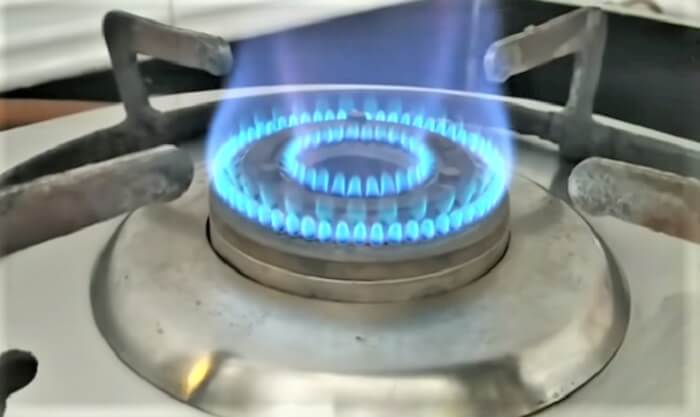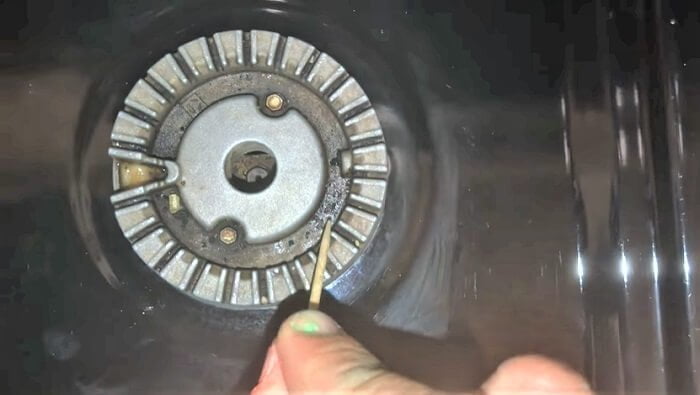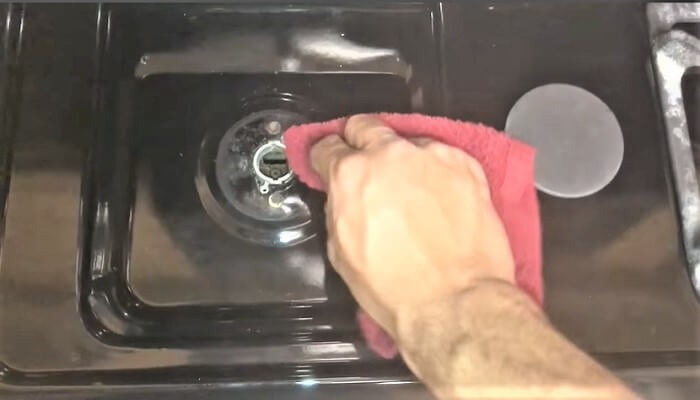Gas Stove Burner Not Working Properly: How to Fix It?
Note: This article may contain affiliate links, which means if you make a purchase following our links won’t cost you extra, but we may earn a commission. Learn more
A gas stove burner not working properly can be a real hassle. It can mean that you can’t cook your food the way you want, or that you have to go out to eat. When a gas stove burner is not working properly, it can be frustrating for the cook. There are several reasons why a burner might not work correctly.
If your gas stove burner is not working properly, there are a few common issues to consider. One possibility is that the burner ports may be obstructed, hindering the flow of gas and preventing ignition. Cleaning the burner thoroughly can often resolve this problem.
Another potential cause is moisture, particularly if the burner hasn’t dried completely after cleaning. Allowing sufficient time for it to dry before use can help.
A faulty igniter could be to blame, as it may fail to generate a spark or produce a weak spark. Replacing the igniter can typically restore proper burner operation. If troubleshooting steps do not resolve the issue, it may be necessary to seek professional assistance for further diagnosis and repair.
How Does a Gas Stove Burner Work?
A gas stove burner not working properly can be a major inconvenience in the kitchen. In order to ensure that your gas stove burner is working properly, it is important to understand the basic principles of how it works. Gas from the supply line enters the burner through small holes in the center of a metal disk.

The gas then spreads out around the disk as it flows up through tiny openings in the sides of the disk. When you turn on your stove, a spark jumps across these openings and ignites the gas, which creates heat that cooks your food. If one or more of these elements are not working correctly, then you may experience problems with your burner not igniting or staying lit.
Signs of a Gas Stove Burner Not Working
If your gas burner is not working properly, it will become obvious to you visually. You’ll understand and see for yourself. If you don’t get the right heat, cooking will be delayed. The first symptom to notice is that the flame will dim and turn yellow instead of blue. There are also some other symptoms-
1. The flame is weak: If your burner flame is significantly lower than it used to be, or if it’s flickering more than normal, that’s a sign that something is wrong.
2. The flame is uneven: If the flame on your gas stove is uneven, with some parts of the flame being higher than others, that’s another sign that something is wrong.
2. The flame is flickering: If the flame on your gas stove burner is flickering, it’s another sign that could be with the gas line.
3. There’s a burning smell: If you smell gas when your burner is on, that’s a very serious sign that something is wrong. Gas leaks can be extremely dangerous, so if you smell gas, you should shut off your burner immediately and call a professional to come to check it out.
4. The burner won’t light: If you turn on your gas stove and the burner won’t light, that’s another sign that something is wrong. It could be a problem with the igniter, the gas line, or something else.
5. The burner won’t stay lit: If your burner lights but then goes out soon after, that’s another sign of a problem. It could be a problem with the igniter, the gas line, or the burner itself.
If you notice any of these signs, it’s important to call a professional to come to take a look at your gas stove. Trying to fix the problem yourself could be extremely dangerous.
How to Fix a Gas Stove Burner?
If a gas stove burner is not working, it can be fixed by following these simple steps:
1. Check the pilot light. Sometimes, the pilot light will go out and this will cause the burner to not work properly. Make sure it is lit and burning brightly before trying anything else it following the instructions on your stove.
2. Check the burner. If the burner is dirty, clean it with a stiff brush. If it is clogged, clear the burner opening with a toothpick.
3. Check the gas supply. If the gas shut-off valve is turned off, turn it on. If the valve is turned on but the burner still doesn’t work, turn the valve to the off position and wait five minutes. This will allow any gas that has accumulated to dissipate. Turn the valve back on and try the burner again.
4. Clean the burner thoroughly. If there is any dirt or debris built up on the burner, it might prevent it from working correctly. Use a damp cloth to clean it off and see if that fixes the problem.

5. Check the igniter. If the igniter is dirty, clean it with a stiff brush. If it is cracked or broken, it will need to be replaced.
6. Check the wiring. If the burner doesn’t work, there may be a problem with the wiring. Check the wiring diagram for your stove and make sure all the wires are connected properly.
If neither of those things works, then you might need to call a professional technician in order to fix the issue.
Read More: Hiding Your Propane Tank: a Decorative Thought
How Does a Gas Stove Igniter Work?
Gas stove igniters work by creating a spark that lights the gas. The igniter is a wire coil that heats up and creates a spark when it’s exposed to electricity. When you turn on your stove, the electricity flows through the igniter and creates a spark. This spark starts the gas flowing and lights the burner.
How to Fix Gas Stove Igniter?
If your gas stove igniter is not working properly, there are several possible reasons. Here are some reasons why your gas stove igniter may not be working properly, and how to fix them.
1. The igniter may be dirty. If the igniter is dirty, it may not be able to create enough sparks to ignite the gas. To clean the igniter, use a stiff brush and scrub it clean.
2. The igniter may be wet. If the igniter is wet, the sparks may not be able to reach the gas. To fix this, make sure the igniter is dry before using it.
3. The igniter may be defective. If the igniter is defective, it may need to be replaced. You can test the igniter by using a multimeter to test for continuity. If there is no continuity, the igniter will need to be replaced.
4. The gas may be turned off. If the gas is turned off, the igniter will not be able to create sparks. Make sure the gas is turned on before using the igniter.
5. The wiring may be damaged. If the igniter on your gas stove is not working, it could be because the wiring is damaged. To check the wiring, you’ll need to remove the igniter from the stove. Once it’s removed, inspect the wires for any damage. If you see any frayed or damaged wires, you’ll need to replace them.
Once you’ve replaced the damaged wires, you can reattach the igniter to the stove. Make sure that it’s snug and secure before turning on the gas.
Other causes can include a clogged burner orifice, a faulty gas valve, or a problem with the gas supply.
The Gas Stove Won’t Light but Smell Like Gas!
If your gas stove smells like gas but won’t light, there are several possible reasons. The most common reason is that the pilot light is out. If this is the case, you’ll need to relight it. Other possible reasons include a clogged burner, a faulty igniter, or a problem with the gas line.
If the pilot light is out, the first thing you’ll need to do is locate it. On most stoves, it’s located near the front of the burner. Once you’ve found it, use a lighter to ignite it. If it doesn’t light right away, wait a few seconds and try again. If it still doesn’t light, you may need to adjust the flame. To do this, turn the knob to the “Pilot” setting and hold down the igniter button while you light the pilot light.
If the pilot light is lit but the stove still won’t light, the problem may be a clogged burner. To clean a clogged burner, remove it from the stove and soak it in a solution of vinegar and water. Once it’s soaked, scrub the burner with a toothbrush to remove any debris. If the burner is still clogged, you may need to replace it.
If the stove lights but goes out shortly after, the problem may be a faulty igniter. The igniter is what lights the gas when you turn on the stove. If it’s not working properly, it may need to be replaced.
If you smell gas but the stove won’t light, the problem may be with the gas line. If you suspect a gas leak, call your gas company immediately. Do not try to fix the problem yourself.
How to Clean Igniter on a Gas Stove?
There are a few different ways that you can go about cleaning your gas stove’s igniter, and each method has its own benefits and drawbacks. You can choose the method that you think will work best for your needs, or you can try out a few different methods to see which one gives you the best results.
One way to clean your gas stove’s igniter is to use a small brush to remove any debris that might be stuck to it. This is a fairly simple process, but it can be time-consuming if your igniter is very dirty.
Another way to clean your gas stove’s igniter is to use a can of compressed air to blast away any dirt or debris that might be stuck to it. This method is quick and easy, but it can be expensive if you need to use a lot of compressed air.
If your gas stove’s igniter is very dirty, you may need to use a wire brush to clean it. This method is more time-consuming than using a small brush, but it will remove any stubborn dirt or debris that might be stuck to your igniter.
No matter which method you use to clean your gas stove’s igniter, you should make sure that you follow the manufacturer’s instructions carefully. This will help to ensure that you do not damage your igniter while you are trying to clean it.
For more extensive cleaning, you can use a toothbrush, water, and a bleach-free cleaner such as vinegar, baking soda, or dish soap.

Gas Stove Igniter Not Sparking After Cleaning!
If your gas stove igniter isn’t sparking after you’ve cleaned it, there are a few potential reasons why. The most common reason is that the igniter electrode is dirty and needs to be cleaned again. Another possibility is that the igniter wire is loose and needs to be tightened. Finally, the problem could be with the igniter itself, in which case you’ll need to replace it.
If your igniter electrode is dirty, the first thing you’ll need to do is remove it and clean it with a wire brush. Be sure to clean off any debris or dirt that might be blocking the electrode from making contact with the igniter wire. Once the electrode is clean, reattach it and try igniting the stove again. If it still doesn’t work, you may need to replace the electrode.
If the igniter wire is loose, the first thing you’ll need to do is remove the wire from the electrode. Once the wire is removed, use a pair of needle-nose pliers to gently bend the wire back into place. Be careful not to damage the wire while doing this. Once the wire is securely attached to the electrode, try igniting the stove again.
If the problem is with the igniter itself, you’ll need to replace it. The first thing you’ll need to do is remove the old igniter by unscrewing it from the gas valve. Once the old igniter is removed, screw in the new igniter and try igniting the stove again. If the new igniter doesn’t work, you may need to call a professional to help you troubleshoot the problem.
To see our latest posts Click Here